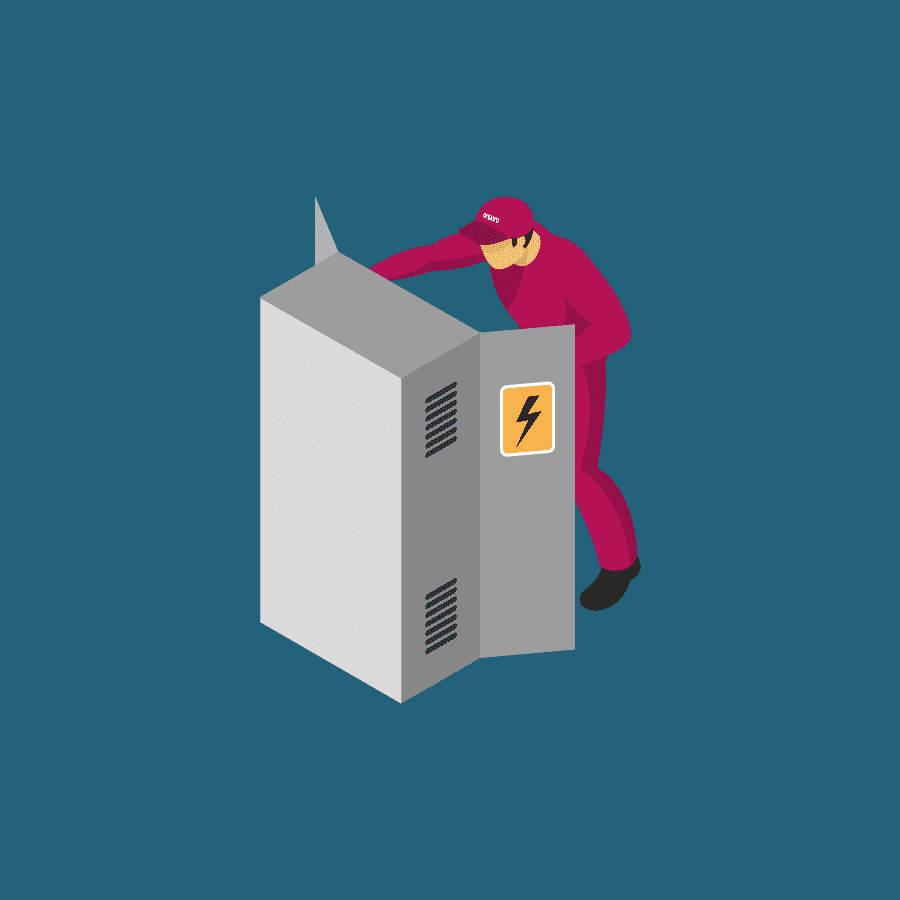Testing the Lightning Protection System's Functionality
Testing the functionality of lightning protection systems is a requirement stipulated in the Technical Regulation for Lightning Protection Systems on Buildings. The frequency of this testing varies depending on the location and purpose of the structure, and the requirements for retesting can range from once a year to once every 5 years.

FOR EMPLOYERS WHO WANT TO KNOW MORE ABOUT:
EVALUATION OF THE LIGHTNING PROTECTION SYSTEM SAFETY
This obligation primarily applies to property owners, but according to the Occupational Safety and Fire Protection Laws, employers, if nothing else, have an obligation towards their employees to ensure that this evaluation is carried out. We have written about this and many other useful things for employers in the following article: MOVING INTO A NEW BUSINESS SPACE AND WORKPLACE SAFETY – TIPS & TRICKS FOR ENTREPRENEURS.
Only the evaluation of the lightning protection system's safety is carried out:
- during and after the construction of new buildings as part of the compliance verification with essential building requirements and is part of the documentation required for the technical inspection of the building
- at prescribed intervals in existing buildings as part of their maintenance
- as an extraordinary inspection of the system after any changes to the system, after any extraordinary events that may affect the technical properties of the system or raise doubts about its usability, and upon request from inspection supervision
The evaluation of the lightning protection system's safety must be conducted:
- after the construction or reconstruction of a facility protected by a lightning protection system
- after repairs or modifications to the lightning protection system
- after a lightning strike to the installation or facility
The evaluation is periodically performed at regular intervals depending on the type of facility as follows:
- 1 year – for lightning protection installations in facilities storing explosives and facilities at risk of explosion, as well as lightning protection installations with sources of ionizing radiation
- 2 years – for facilities at risk of fire, cable cars, and facilities where the grounding of the lightning protection system is connected to the protective grounding of the electrical power plant
- 3 years – for lightning protection installations on tall structures (factory chimneys, churches, mosques, observation towers, etc.)
- 5 years – for lightning protection installations on all other facilities
The method of conducting the inspection and evaluation of the system is determined by the construction project and includes at least:
- an inspection that includes determining whether all parts of the system are in good condition
- measurement to determine whether the system as a whole meets the requirements specified in the construction project, including testing the system in accordance with standards, and the results of the inspection and the condition of the system components are recorded in a report
If you want to learn about how risk assessment is viewed at the European Union level, visit the European Agency for Safety and Health at Work's website.
- temporary structures and buildings under construction
- railway systems outside of protected buildings
- vehicles, ships, aircraft, offshore platforms
- underground high-pressure pipelines
- pipelines, as well as electrical and telecommunication lines
The specialist for this service is:

Tomislav Nimac
Senior Expert Advisor for Occupational Safety
+385 (1) 28 52 117
+385 95 802 71 73
tomislav.nimac@anparo.hr


